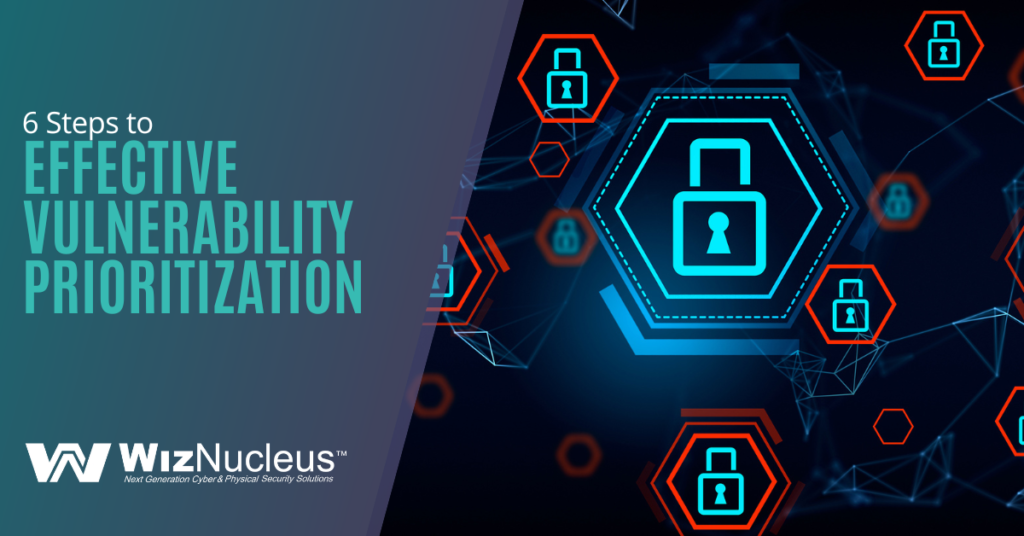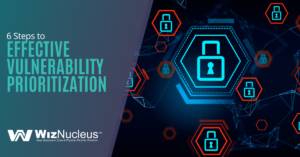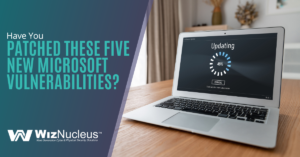Once you’ve identified vulnerabilities in your system, what do you do next? You have a list of threats that need mitigation measures, and it can often feel like a race against the clock to address them before hackers breach your network.
Most organizations can’t address all vulnerabilities at once. It’s not time or cost-effective. Thus, they need to prioritize these vulnerabilities so they can address the most critical first, and then work their way down the list.
There are several factors to consider if you want to handle vulnerability management effectively. We’ve broken the process down into six comprehensive steps to support your cybersecurity efforts.
Step 1. Do a Vulnerability Assessment Scan
Before you can begin prioritizing vulnerabilities you have to know what all of them are. Don’t only rely on information you find online about potential vulnerabilities in various software. They may or may not be relevant to your facility’s IT infrastructure.
A vulnerability assessment scan looks at multiple factors, such as outdated software, web applications, device firmware, and more. It then provides you with a report identifying where you have vulnerabilities in your network.
You need this list as a foundation to begin your prioritization. It will show you exactly what you need to address, and if you’ve used a good scanning tool, you will also get a readout of severity scoring to assist you (more on this below).
Step 2. Identify Which Applications & Devices Are Most Used
Next, you should identify which applications and devices are used the most in your organization. For example, if a critical vulnerability is detected for an older version of Windows, but you only have two PCs in use as backups running that version, it may not rate as a top priority.
Vulnerabilities will be attached to a specific type of software, which is often an operating system for a server, computer, mobile, or IoT device. It’s important to your cyber security and compliance efforts to understand how many devices are vulnerable to attack because of a specific code flaw.
Step 3. Review Current Cybersecurity Protections
Another factor you should use when prioritizing vulnerabilities is the current protections you already have in place. Many vulnerability exploits created by hackers need to be executed by an authenticated user. This means the hacker needs to somehow log in as an authorized system user.
If your organization uses multi-factor authentication and restricts the number of administrative accounts, it can mean that this type of vulnerability is less likely to be exploited. This is due to the access security you have in place.
So, take into consideration your current cyber security services and protections when prioritizing the threat priority.
Step 4. Assess the Likelihood of the Vulnerability Being Exploited
At this point, you should have a good idea of the software and devices most vulnerable and those vulnerabilities for which there is no strong existing safeguard. Now use these factors to assess the likelihood of the vulnerability being exploited.
Those less likely to occur due to safeguards or because it’s a system that your organization rarely uses should be prioritized lower than those for which no protections are currently in place. Additionally, systems used often and those that are mission-critical should be classified as a higher priority.
Step 5. Use the Common Vulnerability Scoring System (CVSS) to Guide You
The next step in prioritizing vulnerabilities for mitigation is to look at the Common Vulnerability Scoring System (CVSS) score for the found vulnerabilities. This is an industry-wide standard that is based on certain factors.
These factors include:
- Exploitability (how easy is the vulnerability to exploit?)
- Impact Metrics (what type of damage can a hacker do if they exploit it?)
- Scope (can an attack on this vulnerability impact another system?)
The scoring for vulnerability severity is:
- Critical
- High
- Medium
- Low
- None
Why not just use the CVSS to prioritize?
Some organizations only use the CVSS to prioritize the mitigation of vulnerabilities, however, this does not take into consideration YOUR organization’s specific IT infrastructure.
For example, you may want to prioritize a “Medium” severity vulnerability that impacts over 500 of your team’s mobile devices higher than you do a “High” severity vulnerability that has a low chance of happening because it’s impacting just one or two devices and needs user access.
Once you’ve gone through the other steps above, then you can refine your prioritization using the CVSS. This ensures you’re addressing the biggest threats specific to your facility.
Step 6. Create a Mitigation Timeline Based on Your Prioritization
Once you have the network vulnerabilities prioritized, you should document this and create a mitigation timeline based on your list. This ensures that threats are being addressed in order of importance and that lower-priority vulnerabilities don’t drop off the radar.
Improve Vulnerability Assessment & Prioritization with Cyberwiz-Pro
Cyberwiz-Pro from WizNucleus can improve the security of your mission-critical facility or organization by providing a simple solution for effective vulnerability assessment prioritization, and management.
Contact us today to schedule a free consultation! Call +1 (646) 558-5577 (New York, NY) or +1 (469) 481-1726 (Carrollton, TX) or reach out online.





